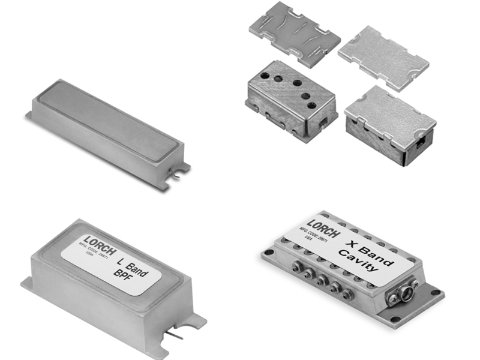Superior performance is achieved through the use of high "Q" components and computer modeling.
-
RF Filters and Diplexers
RF filters up to Ka band in topologies : cavity, ceramic filters, lumped element, discrete, digitaly tunable & switched filter banks.
-
RF Tunable Filters
We offer several standard Bandpass and Bandreject Tuners covering the frequency range of 24 MHz to 4000 MHz in octave bands.
-
Planar X Filter Series
High performance, compact, light-weight solutions for critical RF filtering in X-band, Ku-band, and Ka bands.
-
Cavity Filters
Available in the frequency range of 30 MHz to 40 GHz and with bandwidth options from less than 0.5% to over 66%.
-
Ceramic Filters
Ceramic Filters are manufactured in two basic styles for both commercial and military applications.
-
Discrete Filters
Miniature discrete component filters are designed to give optimal performance where small size is critical.
-

Understanding which RF Filter Technology works best for your next module design
In this webinar, Smiths Interconnect experts will examine the different RF filter technologies, evaluate key parameters when choosing an RF filter, and discuss current and future RF filter trends. Special attention will be given to the emerging planar chip filter and thick, and thin film processing technology.
-

Hurrah for World Space Week!
The World Space Week aims to celebrate the science and technology that contributed to the betterment of humanity and its impressive achievements. Take a look at Smiths Interconnect's achievements through the years.
-

The Internet of Space and radiation resistant transceivers
The explosion of worldwide communications over the past 25 years has led to the pervasive use of mobile and land communications equipment with an abundance of platforms, applications, and devices all driving the growth of many of the largest businesses in the world. There is no doubt that this trend will continue through the Internet of Things (IoT), and the arrival of the 5G technology along with improvements to the underlying network infrastructure. However, the next, ‘Small Step’ for man in terms of ubiquitous communications will be the ‘Giant Leap’ into the Internet of Space.
-

Smiths Interconnect’s contact technology launched on NASA Mars Perseverance Rover
Hypertac hyperboloid contacts will help explore the Red Planet and seek signs of ancient microbial life

